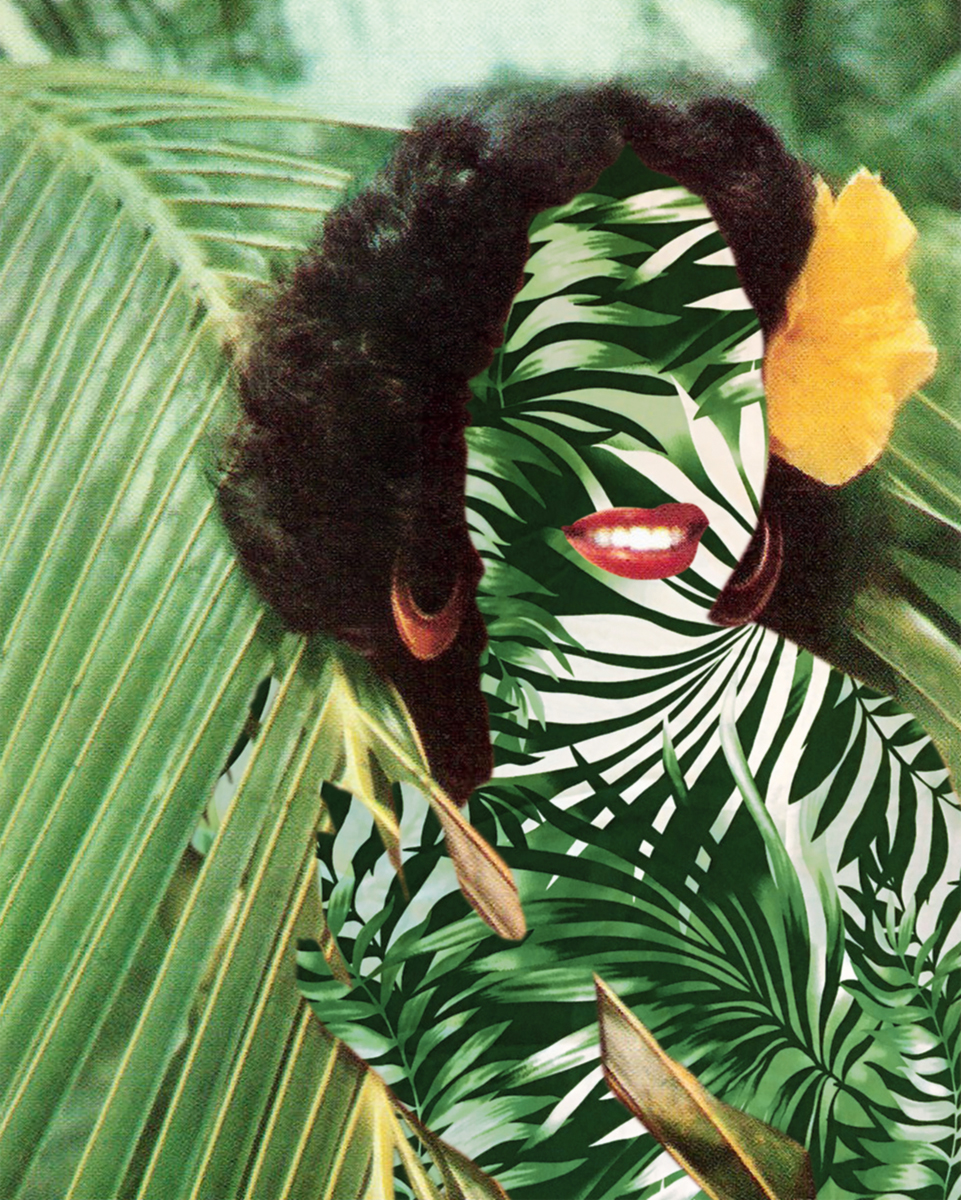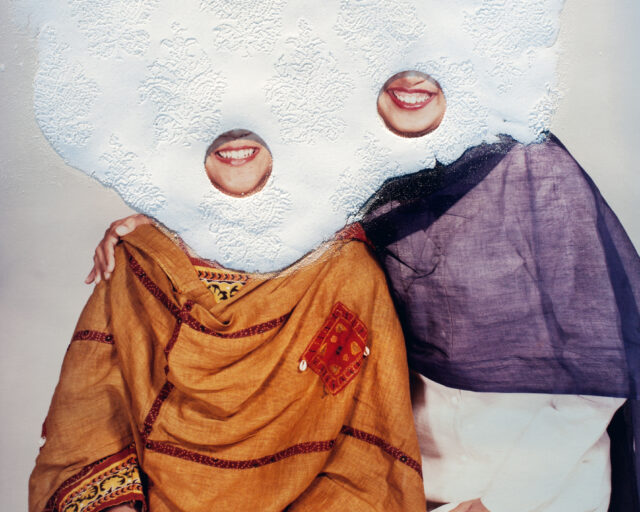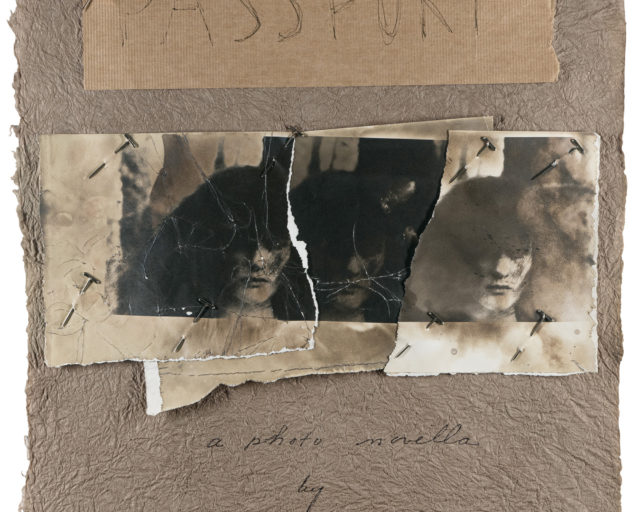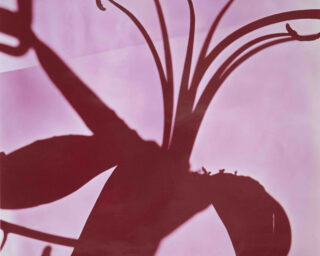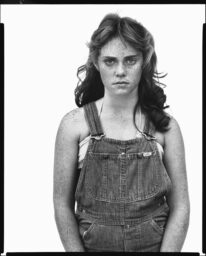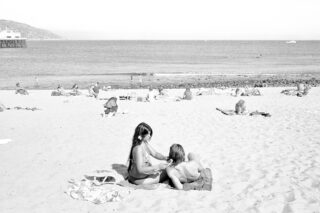Joiri Minaya, Woman-landscape (On Opacity) #5, 2020
Who’s she smiling at? What’s she selling? What’s she hiding? She’s wearing the Caribbean blue sea. The hills. The palm trees. The flower: a third eye.
Joiri Minaya created Woman-landscape (On Opacity) #4 (2020) as part of a series in which she collages vintage postcards advertising the Dominican Republic, superimposing samples of commercially available “tropical prints” and archival images in a way that strategically obscures an easy knowability of the subject. Minaya, born in New York and raised in the Dominican Republic, is a multidisciplinary artist whose work investigates the body within constructions of gender, identity, social space, and landscape, complicating hierarchies through hybridity, challenging otherness, and, most recently, thinking through opacity.

It feels fitting to write about Minaya’s works from an airplane heading to Santo Domingo airport. From the moment I enter the airport, the thick humidity will hug my body. The landscape will inhabit me. I will inhabit it. Although I’m traveling to the Dominican Republic to do research, when I mention the trip to folks, they assume I am going on vacation, escaping to a decadent pleasure space where the sun always shines and everything is for sale—including the women featured in the postcards. Minaya’s photographs disrupt these reductive perceptions of the Caribbean.
In an interview, Minaya spoke about her interest in expanding “identity labels” when discussing and making her work, which, she says, “is about identity but it’s not about identity.” She is interested in subverting the assumptions and expectations people make when they identify her as Caribbean or Dominican. To do this, she uses popular visual forms that perpetuate limiting notions of Caribbeaness or Dominicaness, such as the tourist postcard.
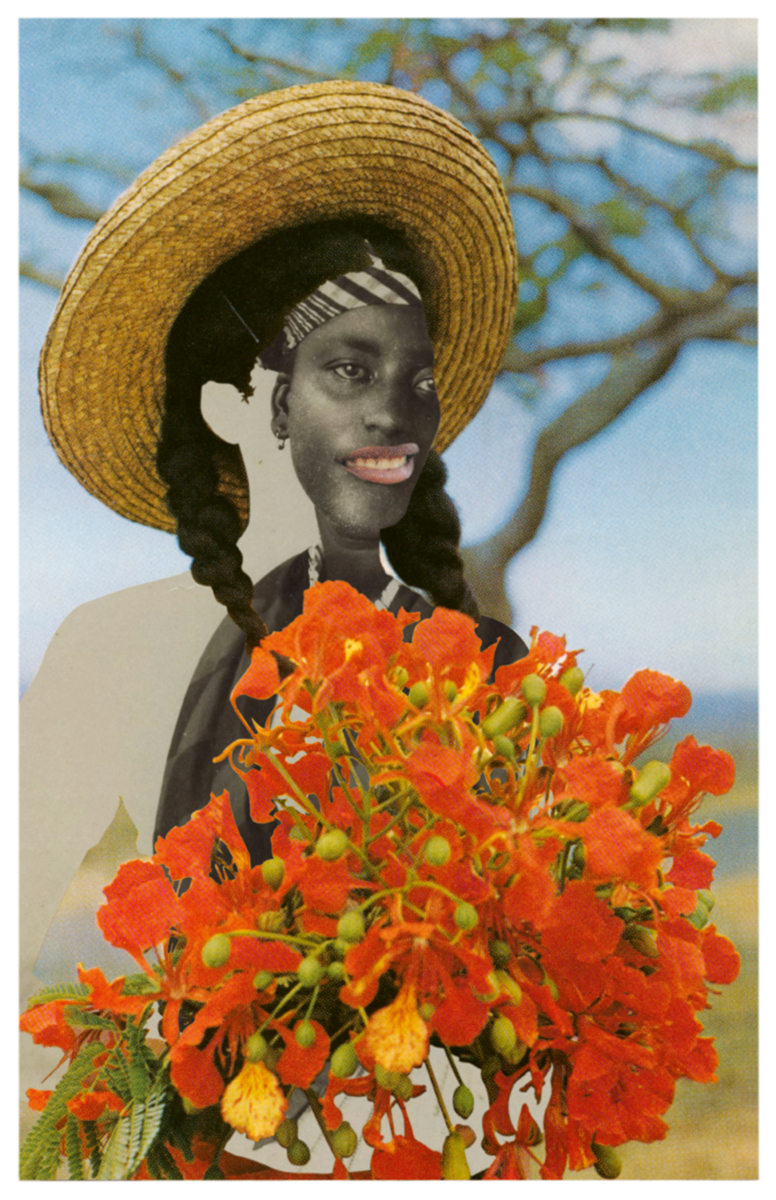

The Woman-landscape series draws on Édouard Glissant’s essay “For Opacity,” in which he explores the concept of opacity—a call to move away from transparency toward the untranslatable, the unknowable—as a way to disrupt identity hierarchies. In her work, Minaya asks why we have to label, and be trapped in labels. She takes Glissant’s notion of the “right to opacity” as a way to dismantle difference, to blur the borders of difference, the colonizer and the other, the tourist and the local, the past and the present. In Continuum II (2021), she juxtaposes a well-known painting by Canadian artist François Beaucourt, formerly known as Portrait of a Negro Slave (1786) and recently retitled Portrait of a Haitian Woman, with an image of a brochure of Bávaro, a touristic town in the east Dominican Republic.
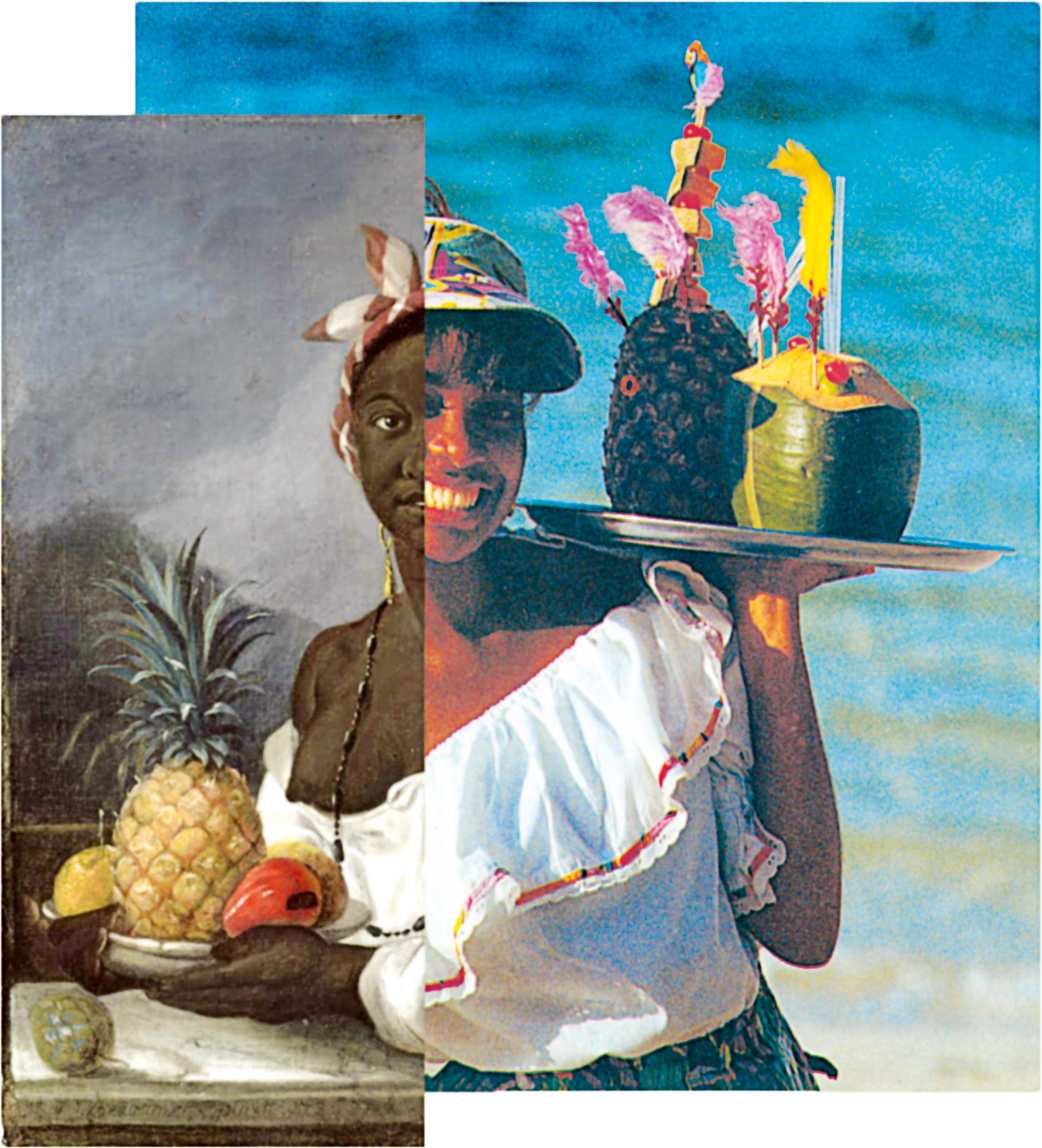
All images courtesy the artist
In the midst of a global climate emergency that presents an urgent need for ethical tourism, Minaya’s nuanced work, which disrupts and questions the hierarchy between figure and landscape through a kind of visual camouflage, is incredibly timely. The artist weaves the figure into the landscape and the landscape into the figure, signaling, urging, revealing our interdependence and kinship with fruit, palm trees, flowers, the sea.
Minaya has remixed the postcards and archival photographs to create un choque, defined by Gloria Anzaldúa in her book Borderlands/La Frontera as a “cultural collision”—a conflict between how we perceive and are perceived. Much like Anzaldúa, who is known for innovatively remixing theory, poetry, and personal narrative “to carve and chisel her own face,” Minaya reclaims an everyday visual vocabulary, revealing the breadth and depths of the worlds she depicts with unapologetic fierceness.
This piece originally appeared in Aperture, issue 245, “Latinx,” under the title “Dominican Postcards.”










